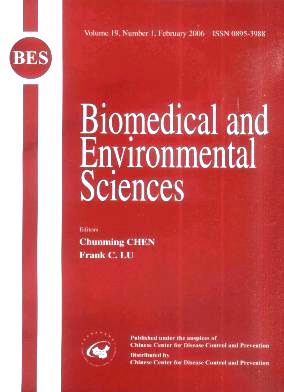Report on Childhood Obesity in China (2)Verification of BMI Classification Reference for Overweight and Obesity in Chinese Children and Adolescents
-
Key words:
- BMI classification /
- Verification /
- Child /
- China /
- Obese
Abstract: Objective To verify Working Group for Obesity in China (WGOC) recommended body mass index (BMI) classification reference for overweight and obesity in Chinese children and adolescents using the data of 2002 China Nationwide Nutrition and Health Survey. Methods Pediatric metabolic syndrome (MetS) and abnormality of each risk factor for MetS were defined using the criteria for US adolescents. Definition of hyper-TC, LDL, and dyslipidemia in adults was applied as well. The average level and abnormality rate of the metabolic indicators were described by BMI percentiles and compared with general linear model analysis. Receiver operating characteristic analysis was used to summarize the potential of BMI to discriminate between thepresence and absence of the abnormality of these indicators. Results There was neither significantly increasing nor significantly decreasing trend of biochemical parameter levels in low BMI percentile range (<65th). Slight increasing trend from the 75th and a significant increase were found when BMI≥85th percentile. In general, the prevalence of the examined risk factors varied slightly when BMI percentile<75th, and substantial increases were consistently seen when BMI percentile≥75th. As an indicator of hyper-TG, hypertension and MetS, the sensitivity and specificity were equal at the point of BMI<75th percentile, and the Youden's index of risk factors also reached peak point before 75th percentile except for MetS. When the BMI percentile was used as the screening indicator of MetS, Youden's index reached peak point at 85th percentile, just the point in the ROC graph that was nearest to the upper left corner. Conclusion The BMI classification reference for overweight and obesity recommended by WGOC is rational to predict and prevent health risks in Chinese children and adolescents. Lower screening cut-off points, such as 83th percentile or 80th percentile, should not be excluded when they are considered as overweight criteria in future intervention or prevention studies.
| Citation: | GUAN-SHENG MA, YAN-PING LI, XIAO-QI HU, ZHAO-HUI CUI, XIAO-GUANG YANG, CHUN-MING CHEN. Report on Childhood Obesity in China (2)Verification of BMI Classification Reference for Overweight and Obesity in Chinese Children and Adolescents[J]. Biomedical and Environmental Sciences, 2006, 19(1): 1-7. |







 Quick Links
Quick Links
 DownLoad:
DownLoad: